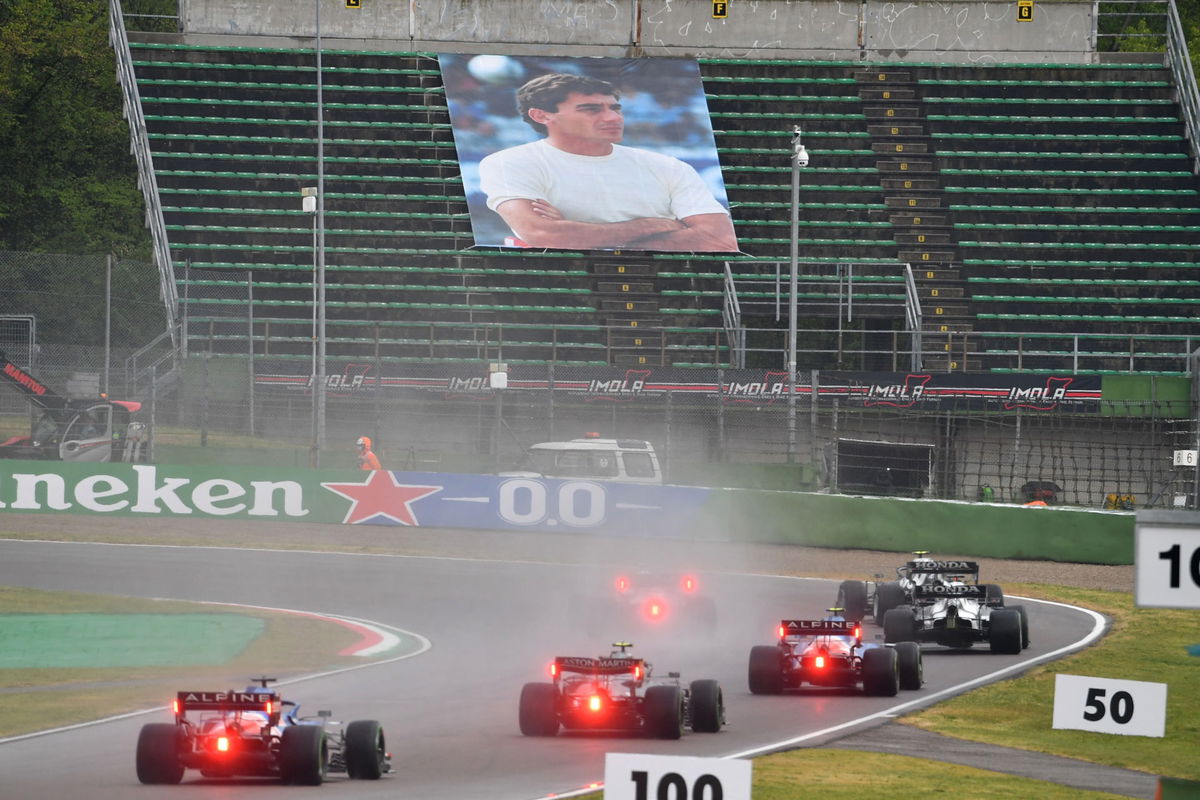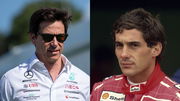
Reuters
Formula One F1 – Emilia Romagna Grand Prix – Autodromo Enzo e Dino Ferrari, Imola, Italy – April 18, 2021 A picture of Ayrton Senna is seen in the stands during the race REUTERS/Jennifer Lorenzini

Reuters
Formula One F1 – Emilia Romagna Grand Prix – Autodromo Enzo e Dino Ferrari, Imola, Italy – April 18, 2021 A picture of Ayrton Senna is seen in the stands during the race REUTERS/Jennifer Lorenzini
Cloudy skies overbearing the tracks always make for some of the most exciting races. Although the fans love a good race in the rain, the Formula 1 drivers, too, enjoy the challenge. Low visibility, slippery conditions, and the nerves aside, the adrenaline junkies under the helmet relish the thrill. However, it is a very different environment both outside the cockpit and inside it.
Watch What’s Trending Now!
A lot of things work differently when an F1 car races, or rather, drives in the rain. Formula 1 cars are built to race in the rain; however, the conditions can not be too extreme. Pirelli provides the teams with three compounds – the soft, hard, and the medium, collectively known as the slicks. When the clouds open, however, teams have to choose between the green intermediate and the blue full rain tires.

Reuters
Formula One F1 – Belgian Grand Prix – Spa-Francorchamps, Spa, Belgium – August 28, 2021 Mercedes’ Lewis Hamilton during qualifying REUTERS/Christian Hartmann
The green boots are extremely versatile and can be used on a wet track even if there is no standing water; they are also used if the track is drying up. The full blues are most kept aside for heavy rains – where besides visibility, the grip is a major factor.
ADVERTISEMENT
Read More: Max Verstappen Backs Lewis Hamilton’s Stance on Turkish GP Pole Position
Looking at the 2021 Belgian GP, it’s easy to say that the machines can drive in the rain, but racing is another ball game. The racing part of the sport highly depends on the conditions on the track. In Spa, the drivers behind Max Verstappen had one complaint – low visibility. Therefore, if the FIA decides on allowing a race in the rain, it’s only when the conditions allow for a safe race.
ADVERTISEMENT
What happens when it rains in Formula 1?
If the FIA gives the grid the green light for a race in wet conditions, the exhilarating part of the Sunday begins. Thrilling with a hint of scary, drivers have a lot to think about when driving in the rain. As mentioned earlier, grip and visibility are the most important.
ADVERTISEMENT
ADVERTISEMENT
The Pirelli rain tires displace water; so when a driver has a car ahead of them, there is a lot of spray. Additionally, the spray stays in the air for some time. As a result, it gets difficult to see the car in front. Sergio Perez had described the feeling, “It’s the same if you close your eyes or keep them open. You don’t see anything.”

Reuters
Formula One F1 – Russian Grand Prix – Sochi Autodrom, Sochi, Russia – September 25, 2021 Aston Martin’s Lance Stroll during qualifying REUTERS/Maxim Shemetov
A factor that connects the vision and the grip problems is standing water. Spray depends on how much rain is following and the amount of standing water on the tracks; this leaves the drivers reliant on their senses.
ADVERTISEMENT
Standing water also leads to aquaplaning, which occurs when the car has no contact patch on the tracks, which leads to having little or no control over the car. As a result, cars often spin off the tack. A good example of the slippery conditions would be the 2020 Turkish GP, where the rains worsened the already low-grip track.
Top Stories
Who Is Canadian F1 Billionaire Lawrence Stroll’s Daughter & Heiress Chloe Stroll?

Toto Wolff Reveals Ayrton Senna’s Tragic Death Destroyed His F1 Racing Dream

After Meting Out Second Class Treatment to Oscar Piastri, Zak Brown Plays Down Discontent Rumors With “Team Player” Praise

“Most Overrated Driver”: Fans Go Stone Pelting on Lewis Hamilton as F1’s Celebratory Tribute Shattered Badly

Who Are Lando Norris’s Parents? Meet Adam Norris and Cisca Wauman

So, while the rains only add to the dangers of the sport, sometimes it brings out the best in the drivers. We have seen so many drivers thrive on a slippery track; more recently, George Russell and Lando Norris. As the sport continues its time on various tracks and conditions, to make the event a tad bit spicier: Let it rain!
Watch this story: 5 F1 Crashes Which Stunned the World
ADVERTISEMENT
ADVERTISEMENT
ADVERTISEMENT
ADVERTISEMENT

